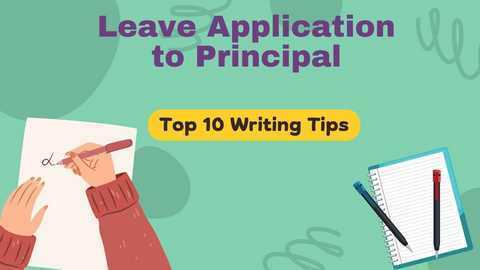Why Precis writing is important for students?
In today’s fast-paced world, people are constantly bombarded with a deluge of information.
With so much data available at our fingertips, it can be challenging to process it all efficiently.
This is where precis writing comes into play.
Precis writing is an art that involves summarizing lengthy passages of text while retaining the key ideas and concepts.
In this article, we will delve into what precis writing is, why it is important, and 10 practical tips with examples for writing an effective precis.
What is Precis Writing?
Precis writing is the art of summarizing a lengthy passage of text into a shorter version, while still retaining its core ideas and concepts.
It involves the selection of the main points and ideas of the original text and presenting them in a condensed form.
The main objective of precis writing is to provide the reader with an accurate and concise understanding of the original text’s content.
In essence, it is a tool that enables people to quickly grasp the essential information from an extended piece of writing without having to go through the entire text.
Why is Writing a Precis is Important?
Precis writing is an essential skill that can help people in various professions.
For instance, students may be required to write a precis of a research paper or an academic article.
Journalists may need to summarize an interview or a press release, while business professionals may need to create a precis of a report or a proposal.
Moreover, precis writing can help people save time and effort.
In today’s fast-paced world, time is a valuable commodity, and being able to quickly comprehend and convey information can be a significant advantage.
10 Best Tips an Effective Precis Writing With Examples

1. Read the Text Thoroughly
The first step in writing an effective precis is to read the original text thoroughly.
The objective is to gain a clear understanding of the main points and ideas presented in the text.
It is essential to read the text multiple times, taking notes of the most critical information presented.
While reading the text, it is essential to identify the author’s main arguments, the supporting evidence, and any counter arguments presented.
This will help you to create a concise and coherent precis that accurately reflects the original text’s content.
Example:
Let’s consider an example of a passage that needs to be summarized:
Original Text:
“The world is facing an unprecedented crisis due to climate change. The effects of global warming can be seen in rising sea levels, frequent natural disasters, and extreme weather patterns. The main culprits are the developed countries that have contributed the most to greenhouse gas emissions. The solution lies in a global effort to reduce carbon emissions and shift towards renewable sources of energy.”
2. Identify the Main Points
After reading the text thoroughly, the next step is to identify the main points and ideas presented in the text.
It is essential to focus on the most critical information and avoid irrelevant details.
This will help you create a concise and effective precis.
Example:
After reading the passage above (in point 1.), we can identify the following main points:
Climate change is an unprecedented crisis
Global warming causes rising sea levels, natural disasters, and extreme weather patterns
Developed countries are the main culprits of greenhouse gas emissions
The solution is to reduce carbon emissions and shift towards renewable sources of energy
3. Write a Draft Precis
Once you have identified the main points, it is time to write a draft precis.
The objective is to present the main ideas in a coherent and concise form.
It is essential to use your own words while retaining the original meaning of the text.
Example:
Based on the main points identified above, we can draft the following precis:
Precis:
Climate change is an unprecedented crisis causing rising sea levels, natural disasters, and extreme weather patterns. Developed countries are the primary culprits due to their significant greenhouse gas emissions. The solution lies in global efforts to reduce carbon emissions and switch to renewable energy.
4. Edit and Refine
After drafting the precis, it is essential to edit and refine it.
This involves reviewing the precis to ensure that it accurately reflects the main ideas and concepts presented in the original text.
It is also important to check for grammatical errors, spelling mistakes, and other inconsistencies.
Example:
Let’s refine the precis we drafted in the previous step:
Revised Precis:
Climate change is an unprecedented global crisis caused by global warming. The effects of this phenomenon are evident in rising sea levels, frequent natural disasters, and extreme weather patterns. Developed countries have contributed the most to greenhouse gas emissions, making them the main culprits. The solution to this crisis lies in reducing carbon emissions and shifting towards renewable sources of energy.
5. Use Active Voice and Strong Verbs in Precis Writing
When writing a precis, it is important to use active voice and strong verbs to convey the main ideas and concepts.
Active voice sentences are more direct and concise than passive voice sentences, making them more effective at conveying essential information.
Example:
Original Text: The study was conducted by the researchers to determine the effects of caffeine on cognitive performance.
Passive Voice Precis: The effects of caffeine on cognitive performance were studied by researchers.
Active Voice Precis: Researchers studied the effects of caffeine on cognitive performance.
In the active voice precis, the sentence is more direct and concise.
It also highlights the key information in the original text.
Similarly, using strong verbs can help to convey the main ideas and concepts more effectively.
Strong verbs are action words that add meaning and clarity to a sentence, making it more engaging and compelling.
Example:
Original Text: The company experienced a decline in sales due to increased competition.
Weak Verb Precis: The company had a decline in sales due to increased competition.
Strong Verb Precis: The company suffered a decline in sales due to increased competition.
In the strong verb precis, the verb “suffered” adds a more intense and impactful tone, conveying the seriousness of the situation.
6. Focus on the Author’s Purpose and Tone
When writing a precis, it is important to focus on the author’s purpose and tone.
The purpose is the reason why the author wrote the text, while the tone is the author’s attitude towards the subject.
Identifying the author’s purpose and tone can help to ensure that the precis accurately conveys the main ideas and concepts presented in the original text.
It can also help to make the precis more engaging and interesting to readers.
Example:
Original Text: The article argues that the current education system is failing students because it focuses too much on memorization and not enough on critical thinking.
Purpose: To argue that the current education system is failing students.
Tone: Critical, frustrated.
Precis: The article argues that the current education system is failing students by focusing too much on memorization and neglecting critical thinking.
In this example, by identifying the purpose and tone of the article, we can create a more accurate and engaging precis.
7. Use Transition Words and Phrases while Writing a Precis
Using transition words and phrases can help to create a more cohesive and coherent precis.
Transition words and phrases are words that connect ideas and sentences, making the precis flow smoothly and logically.
Example:
Original Text: The report suggests that implementing a recycling program could help to reduce waste and save money.
Precis without Transition Words: The report suggests implementing a recycling program could help reduce waste and save money.
Precis with Transition Words: The report suggests that implementing a recycling program could help to reduce waste and save money.
Additionally, it recommends educating the public about the benefits of recycling to increase participation.
By adding transition words and phrases, we can create a more structured and logical precis.
It also adds more depth to the precis by mentioning additional recommendations from the report.
8. Avoid Adding Personal Opinions
When writing a precis, it is important to avoid adding personal opinions.
A precis is a summary of the original text, and it should reflect the author’s ideas and arguments accurately.
Adding personal opinions can distort the meaning of the original text and mislead the reader.
Example:
Original Text: The article argues that social media has a negative impact on mental health.
Personal Opinion Precis: I strongly believe that social media has a negative impact on mental health, as argued in the article.
Impersonal Precis: The article argues that social media has a negative impact on mental health.
In the impersonal precis, we can accurately convey the main idea of the original text without adding personal opinions.
This helps to keep the precis objective and factual.
9. Highlight Key Vocabulary
When writing a precis, it is important to highlight key vocabulary used in the original text.
Key vocabulary refers to words and phrases that are essential to understanding the main ideas and concepts presented in the text.
Highlighting key vocabulary can help to ensure that the precis accurately reflects the main ideas and concepts presented in the original text. t can also make the precis more engaging and interesting to readers.
Example:
Original Text: The study found that there was a significant correlation between exercise and mental health.
Precis with Key Vocabulary: The study found that there was a significant correlation between exercise and mental health.
The authors defined exercise as “physical activity that is planned, structured, and repetitive.”
By highlighting the key vocabulary “exercise” and providing a definition, we can accurately convey the main idea of the original text.
It also adds more depth to the precis by providing additional information that is relevant to the study.
10. Check the Word Count of Your Precis
The final step is to check the word count of the precis.
The ideal word count for a precis should be around one-third of the original text’s length.
It is important to ensure that the precis is concise and contains only the most essential information.
Example:
Let’s check the word count of the revised precis we created in the previous step (Point no 3.):
Word Count: 44
Original Text Word Count: 65
Conclusion
In conclusion, precis writing is an essential skill that can help people save time and effort while conveying essential information accurately.
It involves summarizing a lengthy passage of text while retaining the key ideas and concepts.
By following the above tips, anyone can master the art of precis writing and effectively communicate important information to others.
By practicing these tips, you can improve your precis writing skills and effectively convey essential information to others.




